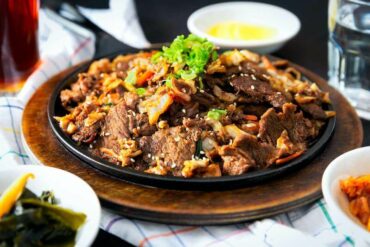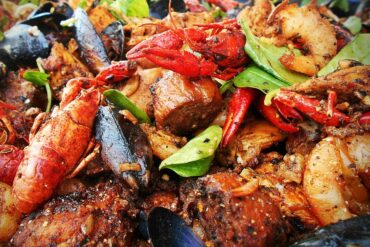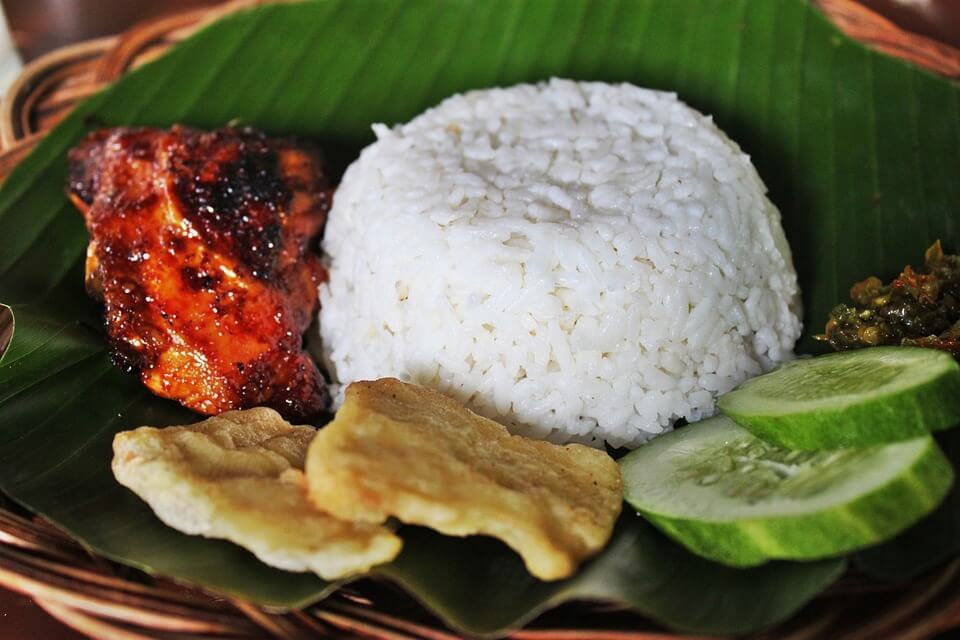Rice is a staple food for an enormous percentage of the population throughout the world. It’s easy to prepare and can be easily combined with other ingredients to prepare countless dishes.
As you surely know, there are several types of rice, each with its taste, texture, and nutritional profile. Whether you prefer long-grain or short-grain, white or brown, there’s a type of rice out there to suit your taste buds and dietary needs. In this article, we’ll explore the two most popular varieties of rice and delve into their nutritional benefits, so you can make informed choices about which type of rice to include in your meals.
White Rice
White rice is the polished version of rice, where the bran and germ have been removed, leaving behind only the starchy endosperm.
White rice is popular for its versatility, mild flavor, and ease of cooking. You may want to visit https://minuterice.com/recipes/cheesy-chicken-and-rice/ for a delicious recipe to make with white rice.
In this section, we’ll explore the origin and history of white rice, its nutritional profile, and the pros and cons of consuming it. You’ll find some tips on how to prepare and cook white rice.
Origin and History
White rice originated in Asia. History tells us that the Chinese were the first to cultivate rice around 5000 BC. Then over the centuries, rice spread to other regions of Asia, including India, Japan, and Korea.
In ancient times rice was reserved only for the wealthy. However, as rice cultivation became more widespread, it became a staple food for the masses. Today, rice is grown in many parts of the globe and is consumed by millions worldwide.
Nutritional Profile
White rice is a good source of energy for the body. However, it is low in fiber, vitamins, and minerals, as the germ and the bran are removed during processing. On the other hand, brown rice is a whole grain that contains the bran and germ, making it a better source of fiber and nutrients than white rice.
A cup of cooked white rice (185 grams) contains:
- Calories: 204.
- Carbohydrates: 44.5 grams.
- Protein: 4.3 grams.
- Fat: 0.4 grams.
- Fiber: 0.6 grams.
- Thiamine (Vitamin B1): 12% of the RDI.
- Niacin (Vitamin B3): 15% of the RDI.
- Folate (Vitamin B9): 6% of the RDI.
- Iron: 4% of the RDI.
- Zinc: 3% of the RDI.
Pros and Cons of White Rice
Pros:
Easy to digest: White rice is easy on the digestive system and is often recommended for people with digestive issues.
Quick cooking time: White rice cooks faster than brown rice, making it a convenient option for busy people.
Versatility: White rice can be used for preparing numerous dishes, from porridge to sushi to rice pudding.
Cons:
Low in nutrients: White rice has a lower content of vitamins, minerals, and fiber than brown rice and other whole grains.
High glycemic index: This means that it can cause a rapid rise in blood sugar levels and can be inadequate for those who need to control their blood sugar levels.
Processing: Removing the bran and germ also removes some of the rice’s beneficial nutrients.
How to Prepare and Cook White Rice
Preparing and cooking white rice is a simple process. You’ll need the following:
- One cup of white rice.
- Two cups of water or broth.
- Pinch of salt.
Now:
- Rinse the rice: in a strainer under tap water until it flows clear.
- Combine the rice, water, and salt: Place the rice in a pot with the water/broth and a pinch of salt.
- Bring to a boil over high heat.
- Reduce heat and simmer: Turn heat to low, cover the pot with a lid, and simmer until the water/broth has been absorbed or you can taste it, and the grains feel tender (this usually takes 15 to 20 minutes for white rice).
Brown Rice
Brown rice is a whole grain that has gained popularity over the years due to its impressive nutritional benefits. It is known for its nutty flavor and chewy texture. Let’s see more about it.
Origin and History
Brown rice’s exact origin is unknown, but it is believed to have been cultivated in China more than 5,000 years ago. From there, it spread to other Asian regions and reached Europe and America thanks to ancient merchants.
However, brown rice did not become widely popular In the US until the mid-20th century. Before then, white rice was the preferred choice due to its longer shelf life and softer texture. However, as people became more health-conscious and aware of the benefits of whole grains, brown rice gained popularity.
Nutritional Profile
Brown rice is a nutritional powerhouse. Complex carbohydrates, fiber, and several essential minerals and vitamins are present in its grains. One cup of cooked brown rice (195 grams) contains:
- Calories: 216.
- Carbohydrates: 45 grams.
- Protein: 5 grams.
- Fat: 1.8 grams.
- Fiber: 3.5 grams.
- Thiamin (B1): 12% of the RDI (Recommended Daily Intake).
- Niacin (B3): 15% of the RDI.
- Vitamin B6: 8% of the RDI.
- Folate (B9): 6% of the RDI.
- Iron: 5% of the RDI.
- Magnesium: 21% of the RDI.
- Phosphorus: 16% of the RDI.
- Potassium: 7% of the RDI.
- Zinc: 6% of the RDI.
Besides having more fiber than white rice, brown rice also contains more vitamins and minerals. It also has a lower glycemic index, which causes a lesser impact on blood sugar levels.
Pros and Cons of Brown Rice
Pros:
High in fiber: Brown rice is an excellent source of dietary fiber, which can help promote bowel regularity, lower the risk of cardiac disease, and reduce cholesterol levels.
Rich in nutrients: Brown rice contains several components essential for good health—a lower glycemic index than white rice.
May reduce the risk of heart issues: It has been confirmed that consuming brown rice may help lower cholesterol levels.
Cons:
Longer cooking time: Due to its high fiber content, brown rice needs a longer cooking time.
Harder to digest: For the same reason as above, brown rice can be more difficult to digest.
May contain arsenic: Brown rice may contain higher levels of arsenic than white rice, which can be harmful to health if consumed in large amounts.
How to Prepare and Cook Brown Rice
Preparing and cooking brown rice is simple.
- One cup of brown rice.
- 2 cups of water.
- Pinch of salt (optional).
The preparation is identical to that of white rice, except that it will take longer.
Rinse the rice under cold water until the water runs clear. Add the rice, water, and salt (if using) to a medium-sized saucepan and boil over high heat. Once boiling, reduce the heat to low, cover the saucepan, and simmer the rice for about 45 minutes or until all the water has been absorbed.
Once the rice has finished cooking, please turn off the heat and let it rest for 10 minutes with the lid on. This will make the rice steam and become fluffy. After 10 minutes, remove the lid and fluff the rice with a fork.
Serve the brown rice hot as a side dish or use it as a base for a healthy grain bowl.








